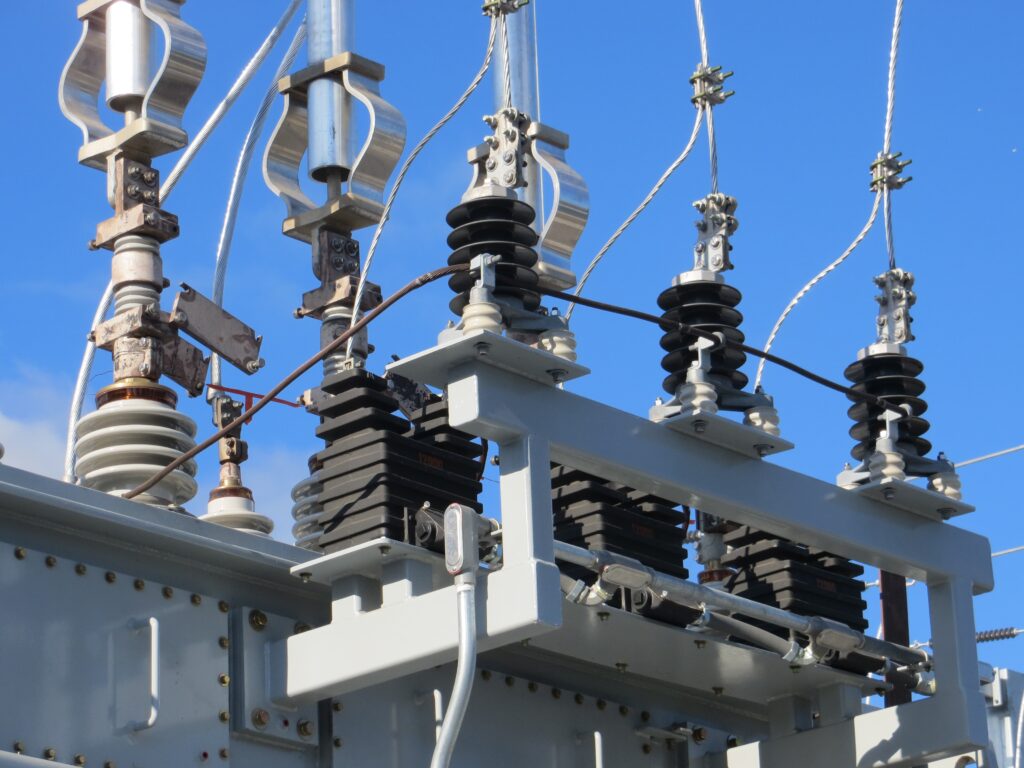Have you ever wondered if a 2500 watt generator would be powerful enough to run your refrigerator during a power outage? In this article, we will explore whether or not a generator with a 2500 watt capacity is sufficient to keep your fridge up and running. Join us as we uncover the truth and provide you with all the information you need to know about running your refrigerator on a 2500 watt generator. So, let’s get started and find out if your fridge can stay cool when the power goes out!

Understanding Wattage and Its Significance
Defining wattage
Wattage is the measure of power consumption or production. It represents the rate at which electricity flows, and it is a crucial factor to consider when using generators. Watts indicate the amount of energy an appliance or device needs to function properly. In simple terms, the higher the wattage, the more power needed to operate a device.
Why wattage matters
Wattage is essential to determine the right generator capacity for your needs. Generators come in various sizes and power outputs, and understanding wattage is crucial to ensure that your generator can handle the electrical load you require. Knowing the wattage capacity helps you avoid overloading your generator, which could damage appliances or even lead to a hazardous situation.
Different Types of Generators and Their Capacities
Overview of generator types
There are several types of generators available in the market, each with its unique features and capabilities. Portable generators are commonly used for residential purposes and are versatile due to their mobility. Standby generators, on the other hand, are stationary and provide backup power during outages. Inverter generators offer clean and stable power, making them suitable for sensitive electronics. It’s important to consider the type of generator that best suits your needs before considering its capacity.
Understanding generator capacities
Generator capacity is typically measured in watts or kilowatts. It refers to the maximum power output that a generator can provide. The capacity determines the number and type of electrical appliances that can run simultaneously without overloading the generator. When choosing a generator, it’s important to consider both the continuous and peak power ratings. Continuous power is the sustained output level, while peak power represents the maximum output capacity for a short duration.
Typical Power Requirements of Common Household Devices
Common refrigeration units and their power draw
Refrigerators are one of the most crucial appliances in any household. While power consumption may vary across different models, the average power requirement for a refrigerator typically ranges from 100 to 800 watts. It’s important to check the manufacturer’s specifications or refer to the energy label to determine the exact power draw of your specific refrigerator. Additionally, features like ice makers and water dispensers may increase the power requirements.
Other household appliances and their power needs
Apart from refrigerators, there are several other common household appliances that require power to operate. Dishwashers typically range from 1200 to 2400 watts, washing machines from 500 to 3000 watts, and air conditioners from 1000 to 3500 watts, depending on their size and efficiency. It’s crucial to consider the power needs of these appliances when determining the capacity of the generator you require.
What is a 2500 Watt Generator
Understanding the capacity of a 2500 watt generator
A 2500 watt generator refers to the power output it can provide, which is 2500 watts or 2.5 kilowatts. This capacity indicates that the generator can handle a moderate load of electrical devices, making it suitable for a range of applications. While it may not support power-hungry appliances like air conditioners or some larger refrigerators, it can still provide sufficient power for smaller household appliances and essential electronic devices.
Typical uses and limitations of a 2500 watt generator
A 2500 watt generator is ideal for powering smaller appliances and electronics such as lights, fans, laptops, televisions, radios, and smaller refrigerators. It can also be useful for camping, outdoor events, or as a backup power source during emergencies. However, it is important to be mindful of the generator’s limitations. It may struggle to handle high-power devices and should not be overloaded beyond its capacity to avoid damage.

Can a 2500 Watt Generator Run a Refrigerator?
Energy requirements of modern refrigerators
Modern refrigerators are designed to be energy-efficient, but their power requirements can vary widely. Average-sized refrigerators typically consume around 100 to 800 watts when running. However, during the startup or compressor cycle, the power draw can be significantly higher, sometimes reaching up to two or three times the running wattage. It’s crucial to consider both the running and startup wattage when determining if a 2500 watt generator can effectively run a refrigerator.
Comparing watts output with refrigerator power consumption
A 2500 watt generator generally provides sufficient power to run a smaller or medium-sized refrigerator. Since the running wattage of most refrigerators falls within the range of 100 to 800 watts, a 2500 watt generator can comfortably handle the load. However, it’s important to consider the startup wattage, as this peak power demand can momentarily exceed the running wattage. If the startup power draw of your refrigerator is significantly higher, it may be necessary to consider a generator with a larger capacity.
Margin of Safety in Generator Use
Importance of providing a buffer in power usage
When using a generator, it is essential to provide a margin of safety or buffer to avoid straining the generator and risking potential damage. By having additional wattage capacity beyond the appliances’ needs, you ensure that the generator operates with less stress and can handle temporary power spikes without any issues. This margin of safety also allows for flexibility in adding or swapping appliances without exceeding the generator’s capacity.
How much extra wattage a generator should have beyond appliance’s needs
It’s recommended to have a generator that provides at least 10-20% more wattage capacity than the total combined power requirement of the appliances you plan to run. This extra wattage allows for smoother operation, minimizes the risk of overloading the generator, and increases its lifespan. For example, if the total power requirement of your appliances is 2000 watts, it would be advisable to have a generator with a capacity of at least 2200-2400 watts.

Additional Power Requirements When Starting Appliances
Understanding start-up power draw
When appliances initially power on, they often experience a higher power draw during the startup phase. This surge of power is needed to bring the device to its operating speed. The startup power draw is typically higher than the running power requirement and lasts for a brief period, usually a few seconds. It’s important to consider this additional power requirement, especially when using a generator, to ensure that it can handle the startup surge without overloading.
How this affects generator capacity needs
The startup power draw of appliances affects the generator capacity required. If the startup wattage is significantly higher than the running wattage, it is crucial to select a generator that can handle the peak power demands. Failure to consider the startup power draw may result in the generator being overloaded, leading to potential damage or failure. It is advisable to check the appliance specifications or consult with the manufacturer to determine the startup power requirements.
Adverse Effects of Running a Generator at Full Capacity
Risks involved with maxing out a generator
running a generator at its maximum capacity for prolonged periods can lead to various adverse effects. The generator may experience increased heat build-up, reduced efficiency, and accelerated wear and tear on its components. Overloading the generator can trigger circuit breakers or blow fuses, causing power interruptions. It may also affect the stability of the power output and lead to voltage fluctuations, potentially damaging sensitive electronics or appliances.
Benefits of avoiding running at full capacity
Avoiding running a generator at full capacity offers several advantages. It ensures the generator operates within its designed parameters, resulting in better performance and increased longevity. Running the generator with a margin of safety allows for more stable power output, minimizing the risk to appliances and electronics. Additionally, it provides the flexibility to add or remove devices as needed without the fear of exceeding the generator’s capacity.
Generator Management Techniques to Conserve Power
Steps to reduce power consumption
To conserve power when using a generator, there are several steps you can take. First, prioritize essential appliances and avoid running non-essential devices simultaneously. Unplug or turn off devices that are not in use to reduce power draw. Opt for energy-efficient appliances whenever possible. Additionally, consider using power management techniques such as load shedding or scheduling the operation of power-hungry appliances during off-peak hours to optimize generator usage.
Effectively managing multiple appliances on a generator
When using a generator to power multiple appliances, it’s crucial to carefully manage the load to prevent overloading. Start by calculating the combined wattage requirements of all devices and ensure it is within the generator’s capacity. Distribute the load evenly among different circuits or power outlets to avoid overloading any particular circuit. Monitor the power draw of each device regularly to ensure the generator operates within its limits.
Real World Scenario: Running a Refrigerator on a 2500 Watt Generator
Describing a personal experience
Recently, while camping with a group of friends, we decided to bring a 2500 watt generator to power our essentials. Among those essentials was a small refrigerator to keep our perishables fresh. We were initially unsure if the generator would be able to handle the refrigerator’s power requirements, but we gave it a try with cautious optimism.
Challenges faced and lessons learned
During the initial startup of the refrigerator, we noticed a slight dip in the generator’s performance, indicating a higher power demand. However, once the refrigerator reached its running state, the generator managed to handle the load without any issues. We realized the importance of considering both the running and startup wattage when selecting a generator capacity.
We also learned the significance of providing a margin of safety in generator use. By having additional wattage capacity, we were able to add a few more small appliances without exceeding the generator’s limits. This allowed us to enjoy the convenience and comfort of reliable power during our camping trip.
In conclusion, a 2500 watt generator can successfully run a smaller or medium-sized refrigerator, given that its power requirements fall within the running wattage capacity. However, it is always advisable to consider the startup power draw and provide a margin of safety to ensure optimal performance and avoid potential damage.




